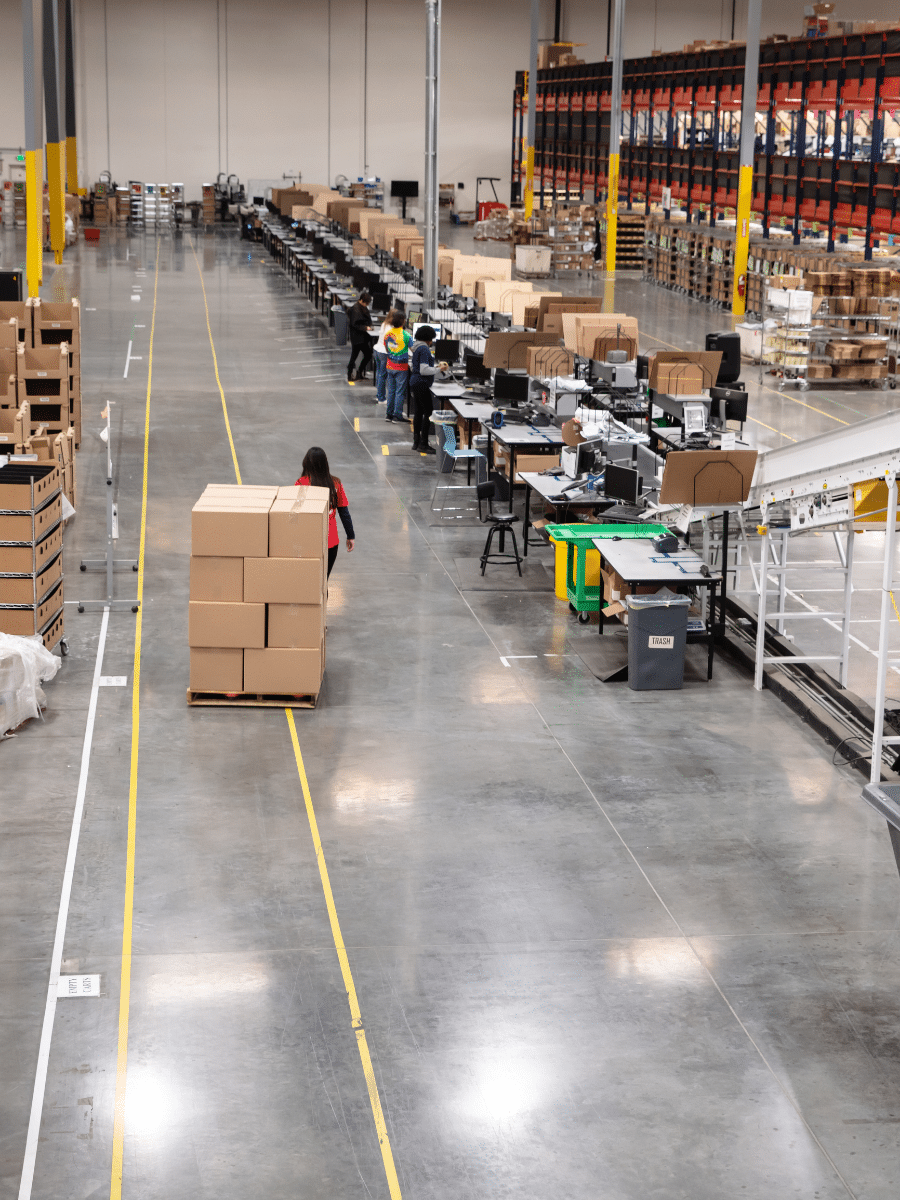The Radical Revamp of Warehouse Operations
In a not-so-distant past, the humble warehouse was the unassuming giant of the supply chain – a sprawling testament to storage and logistics that functioned mostly behind the scenes. A sleeping caterpillar, if you will. Then came e-commerce, the cocoon that sheltered the slumbering giant, eventually emerging as an industrious butterfly that has now become the heartbeat of the online retail world.
E-commerce arrived, and it did so with a bang, bringing with it a seismic shift in the commerce landscape. With this shift, the role of warehouses transformed drastically. Now, they don’t just manage the storage and distribution of goods but have morphed into bustling hubs that sit squarely in the limelight of the retail revolution.
The e-commerce revolution is like a quaint village turning into a bustling city overnight. The giant warehouses, accustomed to dealing with bulk orders, are now dealing with an influx of smaller orders. Picture a gigantic library, where the librarian is asked to fetch thousands of different books for thousands of different people, all at once. This is the new reality of warehouses in the e-commerce age – an age where speed and efficiency are the cornerstones of success.
To keep pace with these demands, warehouses have had to change tact. Technology became the magic potion that turned these warehouses into high-tech hubs. It’s akin to a chess player in a high stakes game, leveraging every available tool to stay ahead of the competition. Advanced technologies, such as automation, robotics, and artificial intelligence, have transformed warehouses into marvels of the digital age.
The introduction of automated storage and retrieval systems (ASRS) has been a game- changer. These systems are like Ferraris in a world of horse carts, zooming down aisles, fetching, and storing items in a fraction of the time it would take a human worker. They have become indispensable to warehouses, enhancing speed and efficiency in the fulfilment process.
The Internet of Things (IoT) has also revolutionised warehouse operations. Imagine a digital symphony where every device, every barcode, every piece of machinery is interconnected, communicating in real-time to ensure a seamless flow of operations. That’s the IoT for you, transforming warehouses into well-orchestrated hubs of efficiency.
These advancements in technology are not just bringing changes, they are shaping a whole new era for warehouses. Machine learning algorithms are enabling warehouses to predict demand patterns, leading to more efficient inventory management. Drones, once a fanciful dream, are becoming a reality in warehouses, being used to scan inventory, or even fetch items from high shelves. It’s like giving warehouse operators the superpower of flight, vastly improving the speed and accuracy of inventory management.
But e-commerce has brought its share of challenges, one of which is handling returns. The ‘try before you buy’ culture has put warehouses on a treadmill that never stops, constantly managing the influx of returned goods. To navigate this, many warehouses have had to transform their strategies and workflows, akin to a master chess player constantly adapting to an opponent’s moves.
To further amplify this point, consider the sheer volume of returns, particularly during peak seasons. The holidays, for instance, bring a deluge of returns, turning warehouses into bustling hubs of activity that echo with the ceaseless hum of product movement. It’s like a city dealing with an influx of tourists post a major event, except that this city operates year-round.
Warehouse design and layouts have had to adapt as well. Traditionally, warehouses were designed for storage, but the e-commerce boom has necessitated a shift towards processing and handling. Today’s warehouses are designed with efficient picking routes, ergonomic workstations, and dedicated areas for fast-moving items. It’s like transforming a simple country road into a bustling highway, complete with express lanes, intersections, and signages.
Warehouse operations have moved from simple storage models to sophisticated, process- oriented systems. Cross-docking, for example, has reduced the need for storage space while speeding up the shipping process, making warehouses more like busy airports than quiet libraries.
Process changes also involve embracing Lean principles, aiming to minimise waste and maximise productivity. Warehouse management systems (WMS) are integrating with other enterprise solutions like Enterprise Resource Planning (ERP) and Customer Relationship Management (CRM), leading to a more cohesive business model.
The role of the warehouse worker has evolved, too. The farmer-like role that once involved primarily manual labour now requires a blend of physical strength and digital savviness. The modern warehouse worker must navigate sophisticated inventory management software, operate advanced machinery, and troubleshoot technological issues, all while managing the physical tasks.
This change in the role of the worker signals a shift towards a more integrated skill set. Warehouse workers now need to be jacks of all trades, proficient in a range of tasks from picking and packing to machine operation and system management. This requires continuous training and development, making human resource management a critical part of warehouse operation.
The metamorphosis has been all-encompassing – physical, technological, and cultural. The industry has had to harmonise people, processes, and technology to adapt to the e- commerce wave, much like a chef creating a gastronomical delight by balancing flavours, textures, and presentation.
In conclusion, e-commerce has indeed transformed warehouses from mere storage facilities into vibrant, high-tech hubs of retail distribution. They have successfully spread their wings, embracing the demands and challenges of e-commerce to become indispensable parts of the retail revolution.
With every tick of the clock, the pace of evolution is quickening and the industry is persistently pushing the boundaries of innovation. Cutting-edge technologies such as blockchain and augmented reality stand on the precipice of significantly impacting the future landscape of warehouse operations. This remarkable metamorphosis, happening one warehouse at a time, is holding the world’s attention. It’s a testament to the fact that even though the journey of transformation can be fraught with challenges, the end result often unfolds into something captivatingly efficient and aesthetically pleasing.



